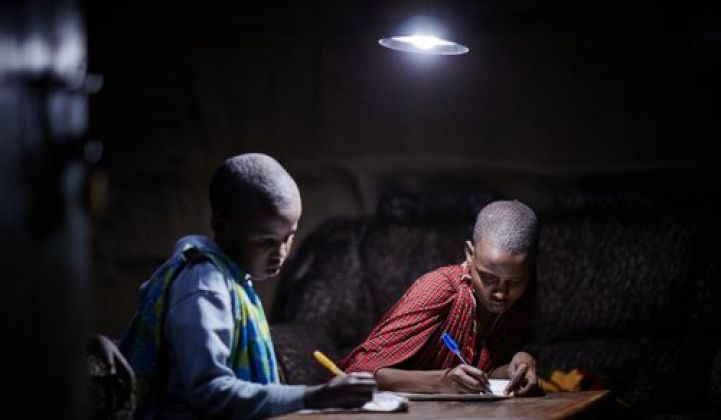People in developing nations used pay-as-you-go services to purchase more than $41 million in small-scale, off-grid solar products in the latter half of 2016.
The number of PAYGO transactions, as they are known, is actually probably far higher, according to the latest semi-annual report from the Global Off-Grid Lighting Association and the World Bank's Lighting Global group.
This is the first report where GOGLA has separated out PAYGO from cash payments, which still make up the bulk of purchases. Globally, consumers spent about $114 million in cash on products such as solar lanterns and residential micro-solar systems in the same period. Single lights with a phone charger make up about half of the sales, no matter the payment method.
At the global level, about 3.77 million products (including verified and non-quality verified products) were sold in the second half of 2016. Sub-Saharan Africa and South Asia account for approximately 1.87 million units (50 percent) and 1.41 million units (38 percent) sold, respectively.
Since sales reporting began in July 2010 through the end of 2016, a cumulative total of 23.72 million quality-verified and 3.48 million non-quality-verified product sales have been reported.

The report authors acknowledge the numbers are low all around. GOGLA only includes data from its 55 member companies and products qualified by the Lighting Global platform.
The data is self-reported, and some companies do not provide revenue information or complete sales information. If information is missing from sales volumes, it is not included. According to GOGLA and Bloomberg New Energy Finance, the data in the report likely represents about half of all of the sales in off-grid solar products in the markets covered.
GOGLA and Lighting Global found that by the end of 2016, more than 85 million people had improved energy access due to these products, which range from about 1 watt to 100 watts. The number of consumers with energy access is actually lower than GOGLA reported previously, but that is due to a change in methodology. The off-grid solar market is a relatively young one, especially for companies that are not entirely reliant on nonprofits and grants, and tracking data on these markets is still somewhat scarce.
“The drop in these impact metrics is therefore owed to restructuring our database and not to a decreasing number of products being used actively by households,” explained Dutch consulting company Berenschot, which oversaw the report. “We hope each report will be an improvement on the last in terms of accuracy and quality of data.”
The sweet spot for product revenue, no matter the payment method, is 3 watts to 10 watts, with most of the volume sold in East Africa. That wattage includes multiple lights and phone-charging capabilities. These products define Tier 1 energy access for at least one person and up to a household. Within the 3- to 10-watt category, PAYGO sales are 40 percent higher than cash sales.

In terms of sheer volume, however, simple solar LED lights of fewer than 3 watts, with or without mobile charging, still dominate sales. Most purchases of unites smaller than 3 watts are in cash, whereas systems larger than 50 watts are, rather unsurprisingly, purchased through PAYGO systems.
Although the young market still skews toward small solar LED lanterns that bring homes and small businesses the very lowest level of modern energy access, the impact of the growth of this market in the past few years is extraordinary.
GOGLA and Lighting Global estimate the products represented in their report help contribute to the incomes of nearly 2 million people. Households have saved about $200 each, with a 164 percent average increase in available hours of light. As Greentech Media previously reported, one of the most significant outcomes of the proliferation of off-grid solar LEDs is that 20 million dangerous kerosene lanterns are no longer in use.
Of course, this is still the tip of the iceberg, with plenty of challenges to scale in the off-grid solar market, not to mention the market for clean cooking options, which solar does not tackle at this point. “With around 1.2 billion people living without access to the grid, spending about USD $27 billion annually on lighting and mobile phone charging,” Koen Peters, executive director of GOGLA, said in the foreword of the report, “the sector still has a lot of work to do.”



